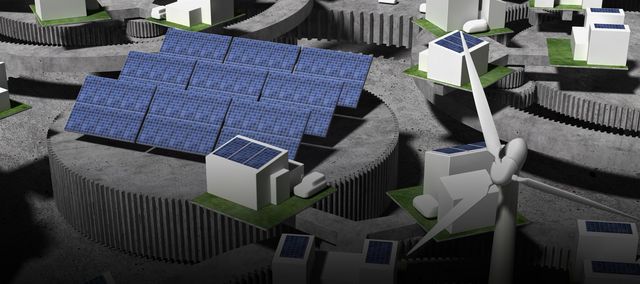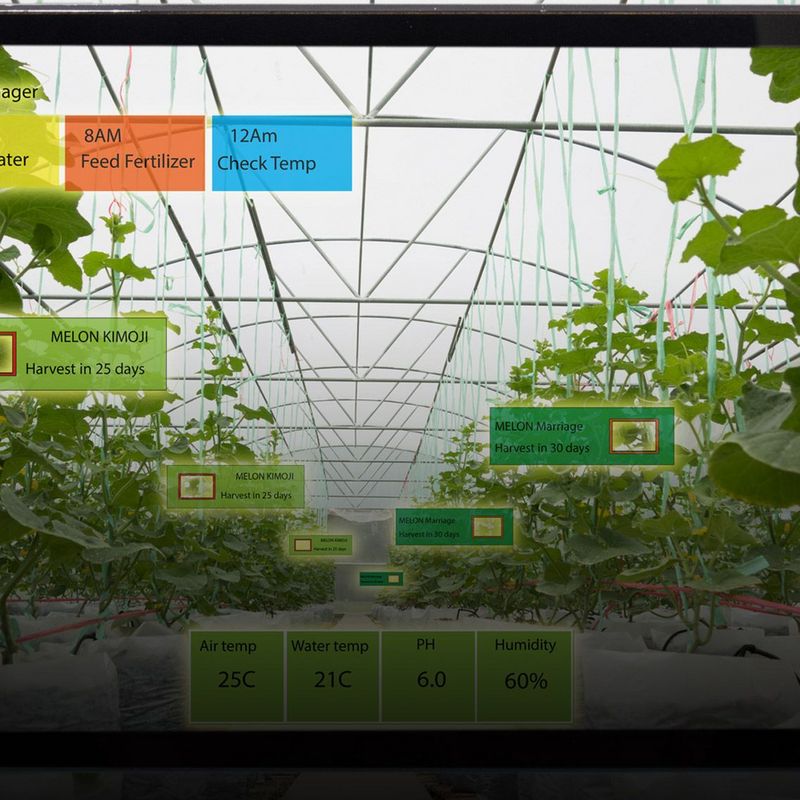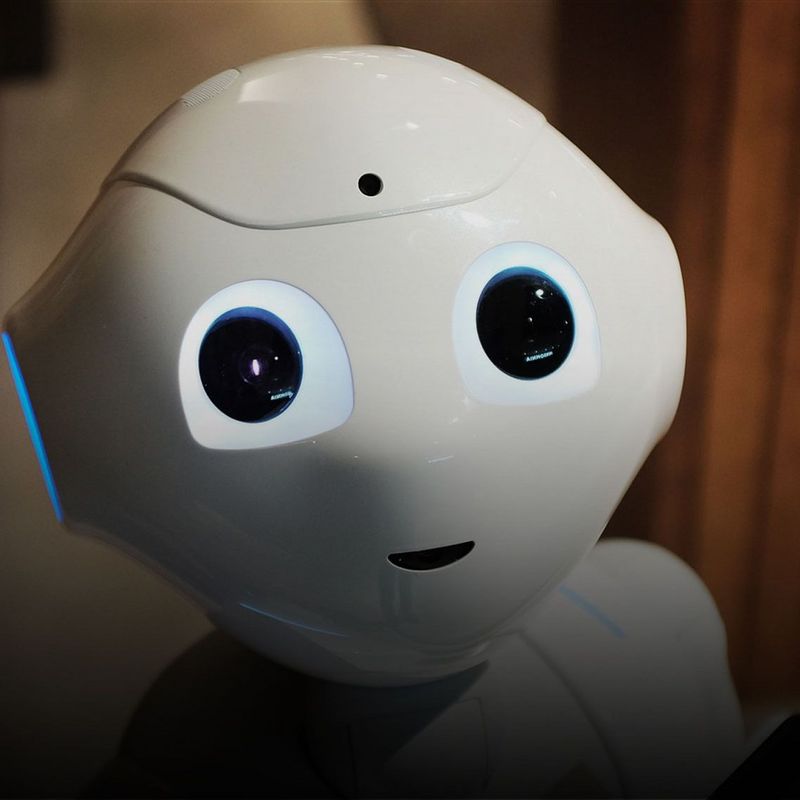30 October 2019
At the end of August, the German Federal Ministry for the Environment launched its new funding initiative entitled "AI lighthouses for the environment, climate, nature and resources". A total of 27 million euros will be made available to support projects using artificial intelligence (AI) to meet environmental challenges. In fact, there are already a number of approaches involving the use of AI to improve air and water quality, stop species loss, track poachers, and grow cereal crops more sustainably and efficiently.
AI in species protection
Around 3,200 tigers currently live in the wild. The aim is to double that number by 2022, as agreed by the governments of all states with tiger populations in 2010. If this is goal is going to be achieved and the big cats protected in the long term, it is crucial to know where how tigers live, how many there are and how their populations spread. The conservation organisation WWF is using artificial intelligence in China to evaluate the thousands of photos that are taken every day in automatic photo traps. Whereas in the past it was down to people to look at and sort the countless photos, tiger images are now directly recognised by optimised image recognition software. Thanks to Cloud technology, the images are also sent more quickly from mostly impassable areas of forest for prompt evaluation by the professionals. This saves both time and resources. In a further step, the intention is for artificial intelligence to help identify individual tigers from their personal stripe patterns. This is a technique that US scientists at the University of Illinois in Chicago are already using in the Wildbook project to determine the identity of zebras, humpback whales and whale sharks. For their part, German researchers want to develop a “weather station for biodiversity” with AI support to provide better protection for insects and birds.
AI monitoring the environment
The number of salmon farms in coastal waters is growing in tandem with the worldwide appetite for salmon fillets. Strict regulations and monitoring programmes are intended to help ensure that the ecosystems in those farms are not stressed beyond what they are capable of supporting. Until now, worms, mussels, starfish, crabs and other macro-invertebrates living on the seabed have been examined under the microscope to determine the health of the ecosystems. However, this is very expensive and time-consuming and only allows for the examination of a few samples. Researchers from the Technical University of Kaiserslautern are now working with colleagues from Scotland and Switzerland on a digital alternative. Their aspiration is to use AI to study microorganisms. These react very quickly and sensitively to changes in their environment and are therefore perfectly suited to use as bio-indicators. However, it is very difficult to identify microbes using conventional methods. The idea is for machine learning to make it possible to exploit the potential of microbes as bio-indicators, thereby making it possible to determine more quickly, cheaply and frequently how healthy the ecosystem of a salmon farm actually is. For things to get to that point, however, the algorithms will need more training. Depending on season, location and local conditions, the composition of bacterial communities on the seabed can vary greatly. Which is why current research is focusing on integrating these influencing factors into the machine learning algorithm. In this way, the algorithm will gradually be refined until it is finally able to monitor environmental pollution automatically – with the aim of helping us exercise greater care in the use of our natural resources.
AI could reduce food waste
Eleven million tonnes of food are wasted every year in Germany before they even leave the production process. As the partners working together on the REIF project explain, strict requirements on product safety, low levels of predictability in agriculture, countless product-specific boundary conditions in food processing, strong fluctuations in demand and the trend towards individualised products in the food industry, as elsewhere, have so far effectively combined to prevent the reduction of this ecological and economic waste. REIF stands for Resource-efficient, Economic and Intelligent Foodchain. Several universities, research institutes and food manufacturers have joined forces to tackle the AI problem. Funded by the Federal Ministry of Economics, the research project will “explore the potential of artificial intelligence to optimise the predictability and controllability of value creation in the food industry” over the next three years. The goal is to build an AI ecosystem that uses digital means to bring all the participants in food production together with the aim of reducing food waste in the future.
Eleven million tonnes of food are wasted every year in Germany before they even leave the production process.
AI saves energy
If we are to achieve our climate targets, we need not only to produce our electricity more sustainably but also to reduce our energy consumption. Artificial intelligence could also help us do this. The non-profit Borderstep Institute in Berlin is using machine learning algorithms as part of the showcase WindNODE project to control the heating in a Berlin district. Using sensors in homes and buildings, the system can determine when residents are at home and powers up the heating accordingly. The system is designed to adapt more and more accurately to the habits of the residents and, in the process, to save 20 to 25 percent of the energy previously used. Scientists from the Landshut University of Applied Sciences are also working in the DENU research project to significantly reduce energy demand through intelligent networking. For this purpose, the researchers are installing measuring and control devices in hotels, indoor swimming pools, factories and office buildings, for example, in Lower Bavaria and combining the measured data with existing energy-efficiency management systems to form a holistic system. Machine learning is then used to analyse the collected data and develop algorithms to reduce the energy consumption of buildings by means of intelligent management. “By looking at all the factors holistically, we can reduce the use of primary energy by more than 50 percent,” says professor and project manager Diana Hehenberger-Risse. This project, which is being funded to the tune of 1.4 million euros by the Federal Ministry of Economics, is intended to determine by 2022 whether this forecast is correct and whether the model developed in Landshut might become a blueprint for intelligent and resource-saving energy management in the energy transition.
“By looking at all the factors holistically, we can reduce the use of primary energy by more than 50 percent.”
AI aims to make agriculture more efficient and environmentally friendly
Projections indicate that, by 2050, the human race will need about 70 percent more food than is produced today. Better and more accurate data could help farmers grow food more efficiently and, at the same time, in a more environmentally friendly way. Microsoft's FarmBeats project feeds data from sensors, drones, satellites and tractors into Cloud-based artificial intelligence models to provide a detailed picture of soil quality and humidity levels in the fields. Because fast Internet is a rarity on most farms, data are sent to the Cloud via unused broadcast frequencies between TV channels. In cooperation with the United States Department of Agriculture, FarmBeats has now launched a pilot project: The fields at the department's 2,800-acre research farm in Maryland have been equipped with a network of sensors. These measure the temperature, humidity, acidity and water level of the soil. A weather station records air temperature, precipitation and wind speed, while a tractor equipped with sensors in turn records the height, biomass and “greenness” of the crops – an indicator of plant health. If the project succeeds, farmers will be able see the data generated by FarmBeats in real time. The researchers will in turn be able to provide farmers with web-based tools and location-specific information that will allow the latter to use seeds and fertilisers in a more targeted manner and generally to refine their cultivation methods. If all goes according to plan, the system will then be tested in greater detail on more than 200 farms across the country.


